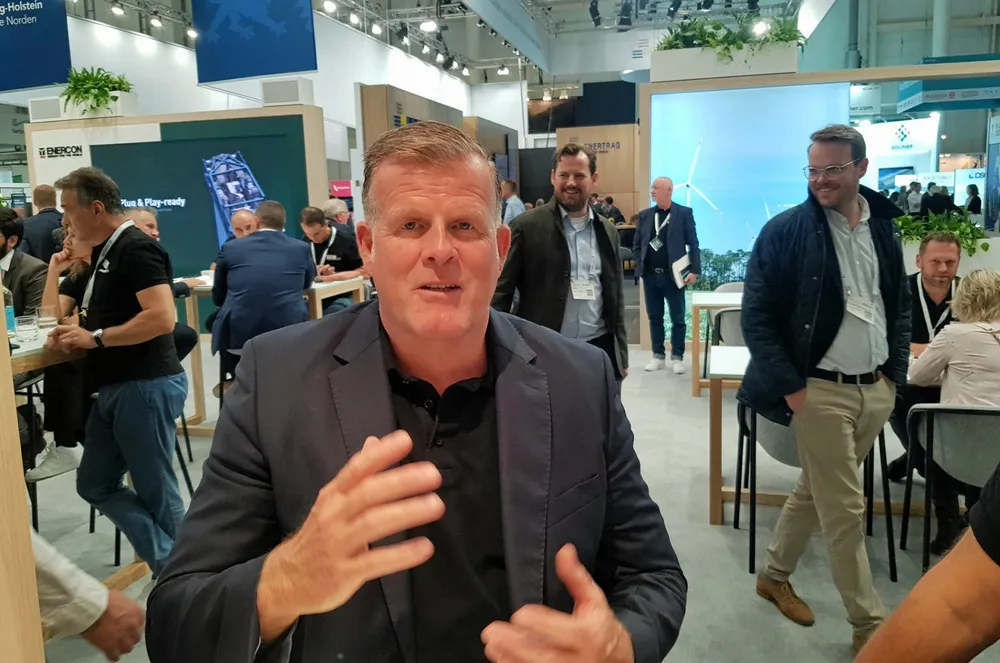Enercon technology chief warns US subsidies could skew European wind competition
German OEM sees good chances for new 6 and 7MW models but CTO Jörg Scholle tells Recharge he's concerned about impact of IRA as well as Chinese competitors

The targeted return to the black comes amid a more cautious approach by Enercon that looks more at the expected levelised cost of energy (LCOE) of a machine than its rated capacity when developing future generations, and a decision to only bet on markets with stable conditions and long-term business opportunities.
Asked, where he sees the rating capacity limit for onshore wind in Europe, Scholle said his company is “not looking so much at the rated capacity of the turbine.
“We look more at the LCOE, and that is also driven by the rotor size,” the CTO said in an interview.
“You have to have a good combination of the rotor size and the generator capacity. And rotor sizes are challenged by the transport regime we are having.”
Turbines with a rating of up to 7MW are at the moment a size “where everybody can go” in Europe, Scholle reckoned and added: “You can go higher, but the question is, does it make it sense to have more generator capacity?”
Bigger turbine not always better
Some markets such as Sweden may be more suitable for the transport of super-sized onshore turbines and blades due to their low population density, but “at the moment, we won’t do a specialised turbine for those markets,” Scholle said.
“Having a bigger turbine is not always better.”
“They're operating in different markets where they have fewer restrictions, and the question is, how they can transfer that to their other markets?”
‘No sense to go to market for one project’
In general, Enercon has become more selective about the markets it is targeting. The company is looking for markets with stable conditions, and a good energy policy, where it can win long-term business partnerships and sufficiently high order volumes.
“It makes no sense to go to a market, just for one project, and then leave again,” Scholle said.
The search for stable, high-volume markets with solid framework conditions that allow for economically viable projects already some years ago had led Enercon to abandon Brazil, a market where it had a long-term presence in the past but currently doesn’t see conditions for re-entry.
“We don’t see it as a strategic market at the moment, we do not see that you can do business there. I wonder how the Chinese can do that, but that is more a political question, I can only guess.”
Next to Germany, markets with good conditions are for example France, Italy or Turkey, Scholle said, but he also singled out Japan, South Korea and Vietnam.
Break-even in 2024
Enercon’s more cautious approach to turbine sizes and markets seems to be bearing fruits.
The new E-175 EP5 in any case was met with strong customer interest at the WindEnergy Hamburg exposition last month, the CTO said, adding that the company had already sold the entire volume aimed for next year.
Level playing field, China and the IRA
In order not to endanger its hard-won recovery, Enercon insists on OEMs being able to operate on a level playing field, above all in its European home market.
The European wind sector is increasingly alarmed by a push from Chinese manufacturers into its domestic European home market, with industry groups accusing Asian rivals of price dumping made possible through unfair state subsidies and unrealistically cheap financing.
“It’s about competitors from outside Europe – from the East and the West,” he said, pointing to US President Joe Biden’s Inflation Reduction Act (IRA) that also could lead to unfair competition.
“OEMs producing in the US are getting IRA subsidies and could also ship the components to Europe and supply them for European wind projects.
“This is competition from outside Europe that is being subsidised, and that's distorting the competition we have here in Europe. That is not what we mean by a level playing field. We need fair conditions for all market participants in Europe.”
(Copyright)